A guest-contribution by the film scholar Oriane Sidre, whose two French film blogs includes Lysao and Mirabelle-Cerisier. Ryūsuke Hamaguchi's Happy Hour (2015) is both a subtle and epic (in length!) Japanese drama that has won prizes at both Locarno and the Kinotayo film festival. Here's hoping it plays one day in Toronto! - D.D.
***
The ship
is sailing away, cutting the sea in half, like an open book. Jun stands alone
at the back of this large ship, breathing the sea air. She stands like the one
that has nothing to lose anymore, and everything to discover again.
Cut to
the sea water and a light tear, which brushes against Sakurako’s cheeks, who is
Jun’s best friend. By an aquatic manner, that either it fills the shots or is a
detail on a face, is the secret affective link that is born. This link connects
the two women, connects a free being to another in suffer.
Water
The tear
dries and the eyes open, they look quite lost, but they are looking straight at
the audience. The look to camera, which is not breaking the fourth wall, is
more natural, confident and generous, and it suddenly freezes, while the cinema
room slowly lights up. From this moment, four hours has passed by, and one hour
and twenty minutes remain to finish the movie. The spectators shivers a little,
as they did not expect this cut, because the were completely lost in Happy Hour’s paths, in this “film-fleuve”
with secret confessions.
The first
break, which happens after the two first hours, was more brutal yet waited.
People easily spoke after the lighting of the room, bodies quickly raised from
the seat in order to go to the bathroom or to enjoy the tea offered by the
festival team. Four hours after the suspension of this tear, minds are moved,
and turned towards this other time, the cinematographic one, that totally makes
us forget the present time.
During
this second break, we can sense that everyone in the room has lost the notion
of time, while we are lost in the interlacing made by dialogues and portraits.
We do not know about the weather outside, about what’s going on in the real
world - what minor news, which traffic problems are going on in the Parisian
subway... A lot of us are remaining in their seat, wondering if they want to
stand, waiting quietly for the following.
The
length is experienced, but not in a tiresome way. On the contrary, Happy. Happy Hour’s 5 hours and 20 minutes suffuses a
meditative and reflexive manner of approaching stories. Its director, Ryusuke
Hamaguchi, is going all the way and creates a kind of suspense around the
feminine character, Fumi, Akari, Sakurako et Jun - played by Maiko Mihara,
Sachie Tanaka, Hazuki Kikuchi and Rira Kawamura. Where the discussion between
the four is going to lead? Which story a meeting in a bus is going to tell? How
a reading aloud will end? The movie is like an experience which rethinks the
articulation between characters and their stories, and also our own
relationship to them.
The
aquatic comparison suits best to the Hamaguchi’s movie. With this
feature-length film, which is as long as a river, is composed by ramifications
similar to small brooks and dialogues just as slippery as fishes. A strange
movie with the peacefulness from a hot water source and sometimes the violence
of a cascade. Happy Hour has a vast
ocean of meanings and multiple horizons.
We are not thrown into this bath,
because the immersion remains progressive. To all appearances, Happy Hour seems to build itself on
familiar steps - introducing the four main characters, succession of scenes
that depict their daily-lives and relationships - but also subtly evades from
these. For instance, the group of friends’ break up, which is also the one of
the movie, that does not usually happen in most usual scripts: it comes during
a long conversation, inside formal and peaceful speeches. Jun suddenly reveals
her big secret that sows discord. The announcement arrives after a long cascade
of reactions and confessions. Jun becomes, from that moment, a being at counter-current:
she decides to disappear and escape from her obligations as a married woman,
but also as a faithful friend. She escapes from her image, breaking the
quartet’s harmony and revealing the flaws of each one.
Atelier
/ Course, class
The first
innovative turn in Happy Hour occurs
after the first 20 minutes of the movie. After few discussions and familial
scenes, three of the women go to the “course”, or “working group” organized by
the fourth one. Before, this class was just quoted as an insignificant fact.
The art of managing the field without underlining it is part of the movie’s
fluidness. Events that will perturb the protagonists are not pointed by finger,
they are just installed with lightness.
In that
logic, three scenes - the meditative class, the trip to hot water sources and
the reading aloud - establish moments that first seem unimportant, then become
essential for the quartet’s progression. The duration of these three scenes -
the second one being the most nice, because edited to the rhythm of a ballade -
redefines each time the dramatic issues, but also the spectatorial links. By
the length of time and the attention given to details and reactions, the movie
orchestrates a vast characters’ painting.
Thus,
this work class builds the first rupture with usual cinematographic spatial and
time codes: its excessive length is surprising, because the full presentation
of the class, the exercises and reactions that follows are given almost in
real-time. Cuts in the editing are more here to approach a continuity feeling
than to break the temporality. Furthermore, improvisation can be seen - to the
contrary of a movie that is highly written in advance - and supports a natural
spontaneity, that reveals way much more than a daily-life’s depiction. During
the exercises, the artist (played by Shuhei Shibata) demands intimate contact
and self-listening: through this, in turn injuries softly appear, accompanied
by an attentive camera. Sensuality, also body language, burst from the four
characters, and changes our interest towards them. With a great generosity,
Hamaguchi includes us in this unexpected rediscover of their bodies, and bodies
of others. The closeness of the shots, but also softened backlighting, convey
the particular touch-sensitive, this feeling of touch. It reaches to the cinema
room, where spectators’ bodies are relaxing while, on screen, characters are
getting closer with as much embarrassment than emotion. The feeling is quite
new, unexpected, almost extraordinary.
The work
class is in itself not so remarkable. Meditation exercises are common to the
one we can find in a yoga class, or some initiation to contemporary dance.
Moreover, the artist, Ukai, does not have the appeal of a therapist, nor is
like a miraculous healer. He then reveals to be quite lazy and unreliable. But,
what is truly admirable, is that the sensitive directing of the scene shows us
the extraordinary in the reactions, and begins to highlight in turn transformations.
New issues are appearing, through this way of touching people and changing body
contact: Sakurako seems apart from the others, overwhelmed by the liveness of
Jun and Akari; Fumi, who is taking photographs, carries a worry that is not
perceptible before; Akari, without wanting it, develops a certain new
complicity with Jun.
Human
Flaws
This
scene also starts a base for one of the major characteristics of the movie.
Ukai is an artist that works on objects that he achieves to maintain on an
equilibrium - which conveys to the rock balancing, an impressive art
discipline. Ukai explains his work as a way of finding the object’s
gravitational point. This links to the four main characters who are also beings
on a fragile equilibrium.
After the
first break in the duration, disequilibrium won’t cease to be present in the
movie. First, the general body of the quartet, which was almost a “corps de
ballet”, bursts and mostly dispatches in the following. Camera shows shiftings
in the positions, and the disappearance of an equality between the four woman.
At the beginning of the movie, the friends were sitting on a bus or at a picnic
table, at the same level. After the meditative class, this harmony in the shots
is exploded, and each one of them is taking a new place on the screen, each one
frees from this “corps de ballet” that was protective. There is an exception:
the trip to the hot water sources, the last moment of equality, where the girls
are walking at the same rhythm, or posing at the same level for a photograph. The
trip is in fact the last union moment before the total bursting, the last
harmonious feeling before movements, actions of freedom and independence.
Then,
personal bodies are influenced by the work course, as they are under a mutation
in progress. Characters have difficulties to react as usual, some fall asleep
on their table, others suddenly faint or, a proving fact for Akari, breaks
their leg. Corporal beings seem invaded by flaws, and, from time to time, are
struck by immobility or abruptness.
Idea of
flaws is even present in the directing and stylistic choices. In general, Happy Hour’s aesthetic is quite
peaceful, nice and close to the rhythm of a serial construction. Yet, it can
also live some moments of pure and highly- advanced stylish behaviors. Thereto,
the movie recalls Shokuzai, with this
combination of television format and personal actions in the mise-en- scene.
Hamaguchi’s and Kiyoshi Kurosawa’s movies are different in their discourse yet
similar at some points. Their feminine quartet are both structuring the movies
as a fractured mirror. In Happy Hour,
emancipation and micro-breakups from the general cinematographic atmosphere
appear with violent zooming, rhythmic editing, swirling camera movement,
symmetrical shots. But it is also interesting to consider the moments where
this stylish freedom occurs. These moments seem at first to fill “empty” scenes
in the narrative texture, spaces of meaning where one character is lonely, or
doing nothing. Yet, they, in a more metaphoric way, always indicates an invisible
change that is particular in its movement.
In the
quartet, Jun reveals herself as the only one who confesses her flaws, by the
scene at the tribunal. This exposure contrasts an introspection of the
feelings, for instance in Sakurako’s family. The scene where Sakurako goes with
her stepmother to settle an embarrassing case that involved her son, which is
quite remarkable in its finesse. It shows a tension built by awkwardness, lack
of understanding and sadness of the events. What could be shocking, intense or
hysterical in this scene does not exist: scandal transforms itself into a heavy
silence, or in a quiet walk with the stepmother. When Sakurako meets her son
after, camera lengthily accompanies both walking and talking casually.
Tranquility of Sakurako’s steps, as the son’s bike’s slows down, permits to
avoid the fight, yet they are filled with unconfessed regret and sorrow.
These
human flaws are more present during the last part of the movie. The four hours
are really fluid in the writing and the rhythm, while the last hour seems long.
Character’s fragility is more visible, words are becoming sharper, actions more
decided. Before, it was like the lightful daily-life could save from all this
pain. Now, it is overrun by the necessity to confront the difficulties. A long
and painful discussion scene in a restaurant symbolizes this. The more
confessions and critiques comes one after another, the more distance is set
between the characters, through mise-en-scene and succession of fixed shots. At
the beginning of the movie, the four women, relaxed, were eating at a picnic
table. In this last scene of group discussion, also a meal, nobody is eating,
nor drinking, nor even moving on its seat. Almost like the slightest movement
could lead to a loss, as if everyone was scared to fall.
Vision...
and perception
Everything
is connected. In the last part, a young writer’s reads aloud, speaking of love
and illusions brought by an attraction, completes, more than it disturbs, the four
characters’ maturation, as well as the movie structure. This short story (which
is apparently specifically written for the movie) is very beautiful. Full of
imagery, it develops its own universe, by describing a fragile attraction, in a
brightful style. One of the main qualities of Happy Hour is to depict the four women’s change without submitting
the other aspects of the movie to this first script’s intention. Therefore, the
reading aloud is both a distinctive level of the movie as well as a connection
to the women’s personal stories.
Jun has
taken advance in this transformation, or we could say she permitted the one of
her friends. By her sudden disappearance and independency, Jun paradoxically
opened a door to a questioning. Her egoism evolves to some kind of generosity
towards her friends. After all the events, and finally the reading aloud,
feelings are bursting in different ways for Sakurako, Fumi and Akari. Facts and
gestures were previously attenuating the violence. Now, they overflow in the
last part: unexpected desire for one, necessary distress for the other, moving
anger for the last. We can observe the achievement of feelings that could not root
before. In fact, the work class of the beginning is finally linked to the
ending short novel. Exercises in finding the balance, in finding the body,
arise a necessary research of love, but also an affirmation of human flaws.
Those flaws which can destroy a couple or a family...
The
writer’s text makes the connection between the vision, what is observed, and
perception, what is truly felt. Reflexions from the text respond to some
appearances deconstructed in the movie: appearance of a conniving and peaceful
quartet of friends, of a perfect Japanese family, of a strong single woman that
fears nothing, of a married woman who should be satisfied with her couple...
Between the four girls, realities, both objective and subjective ones, are
slowly unveiled, and images are dismantled. For instance, characters’ body
languages can sometimes be refuted by their thoughts. Sakurako, who seems so
fragile during the group class, has the most lucid view on what is happening.
Fumi, who looks shy and discreet, will make affirmed decisions.
Then,
understanding the movie does mean we only approach the four women. There is
quite a discreet enlargement in the structure, where each characters develops
its own problematics and deepness, and each presence is appreciated on screen.
As well as this young writer with her own personal issues. But, also, there is
this funny woman on the bus, who talks about her complicated family. A lot of
tenderness can be seen in the way camera is shooting her character, and her
strange, yet animated, face. In the same way, during the meditative class, a
similar tenderness can be found around Fumi’s colleague. This latter must
demonstrate very tactile exercises with Ukai. Embarrassment can be seen on his
face. The discomfort of a close proximity experienced with a man, and in front
of other people watching, shows also emotion in the protagonists’ reactions.
Therefore, lots of details and reactions are coexisting during big scenes from Happy Hour. Events do not only transform
the main quartet, but also the characters around. This quality, which could
only exist in a 5-hours movie, is, once again, remarkable. It is rare to see so
much attention for each actor, each presence, small or big, on the screen.
Finally,
Ryusuke Hamaguchi’s movie, and it is its brightest strength, has a marvelous
discourse on culture and dialogue. Participative and cultural events are
precisely changing the characters, by giving to them (and to us!) a space for
meditation, a space that disturbs a little our daily routines and habits. It is
really wonderful to accompany every protagonists’ reactions during an exercise
that lead them to listen to the other’s belly, or facing poetic words timidly
retold by a young writer. It is moving to discover everyone’s fragilities under
the appearances, or the little losses of balance. Happy Hour shares these fine details, unveils flaws and suffers
without necessarily finding a resolvement. Better, the movie indicates the
importance of an awareness, of a reflexion around these human flaws. During
this long long cinematographic river is hidden the necessity of learning from
this awareness, and to appreciate the intimacy of both one’s own and other’s
fragilities.
Oriane Sidre
Oriane Sidre
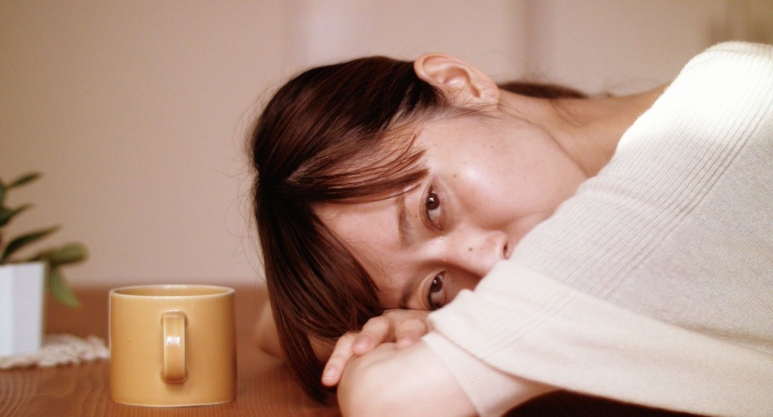

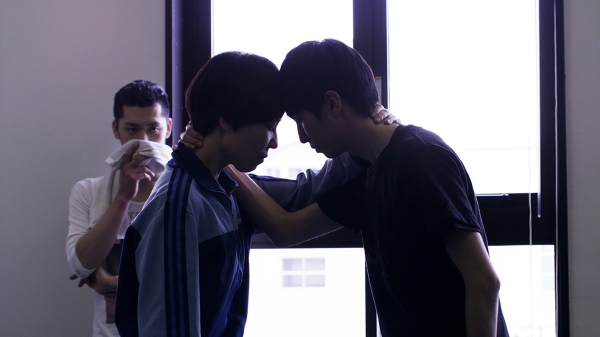
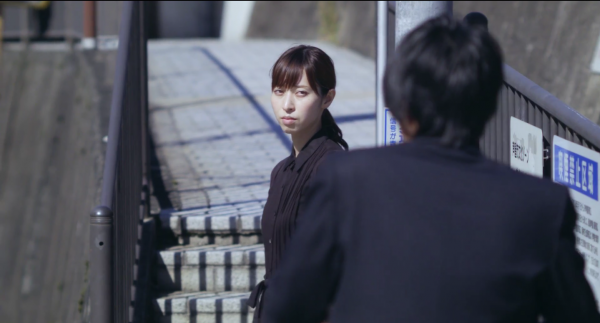
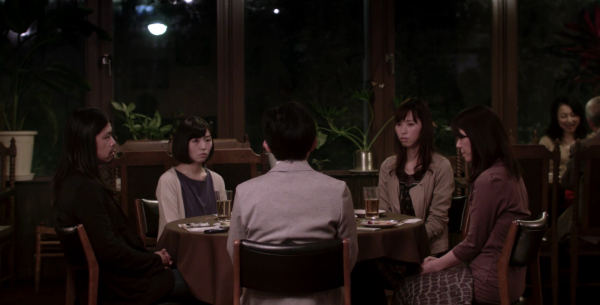
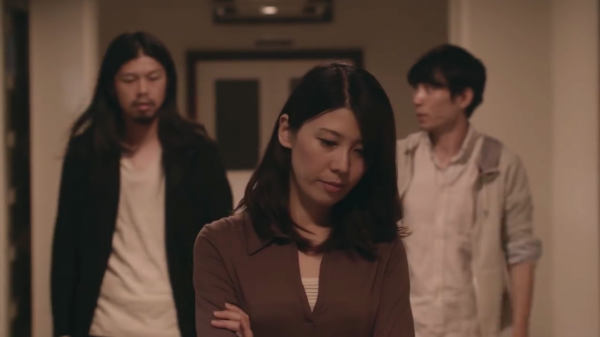
No comments:
Post a Comment